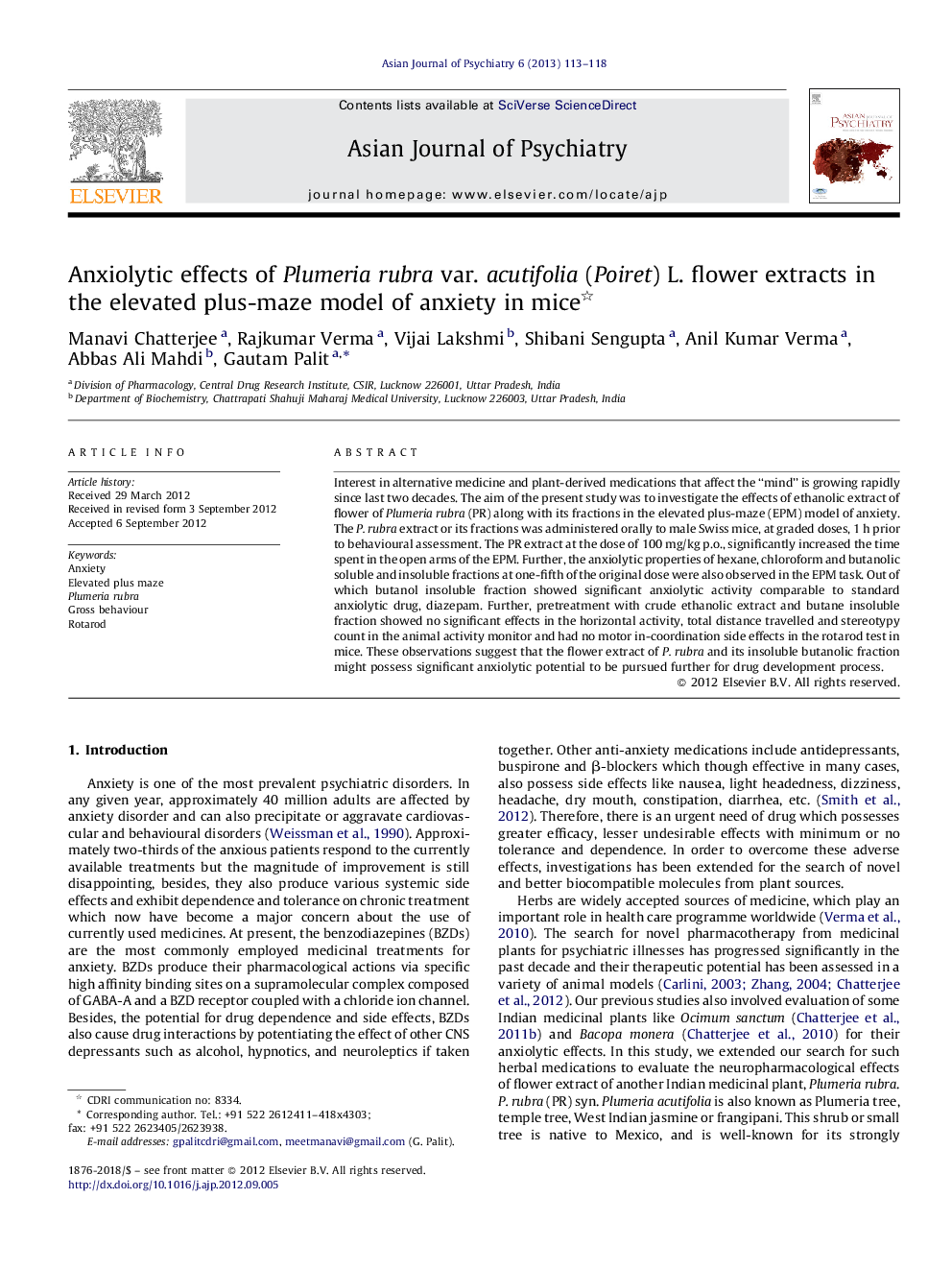| Article ID | Journal | Published Year | Pages | File Type |
|---|---|---|---|---|
| 315509 | Asian Journal of Psychiatry | 2013 | 6 Pages |
Interest in alternative medicine and plant-derived medications that affect the “mind” is growing rapidly since last two decades. The aim of the present study was to investigate the effects of ethanolic extract of flower of Plumeria rubra (PR) along with its fractions in the elevated plus-maze (EPM) model of anxiety. The P. rubra extract or its fractions was administered orally to male Swiss mice, at graded doses, 1 h prior to behavioural assessment. The PR extract at the dose of 100 mg/kg p.o., significantly increased the time spent in the open arms of the EPM. Further, the anxiolytic properties of hexane, chloroform and butanolic soluble and insoluble fractions at one-fifth of the original dose were also observed in the EPM task. Out of which butanol insoluble fraction showed significant anxiolytic activity comparable to standard anxiolytic drug, diazepam. Further, pretreatment with crude ethanolic extract and butane insoluble fraction showed no significant effects in the horizontal activity, total distance travelled and stereotypy count in the animal activity monitor and had no motor in-coordination side effects in the rotarod test in mice. These observations suggest that the flower extract of P. rubra and its insoluble butanolic fraction might possess significant anxiolytic potential to be pursued further for drug development process.
► Sub-chronic administration of Plumeria rubra (PR), at 100 mg/kg p.o., increased the time spent in the open arms of the elevated plus maze test. ► The extract was further fractionated into hexane, chloroform, butane soluble and n-butane insoluble fractions. ► Out of which butanol insoluble fraction (BIF) showed significant anxiolytic activity comparable to standard anxiolytic drug, diazepam. ► Both PR and BIF did not show any significant alterations in the horizontal activity, total distance and stereotypy count in the activity monitor. ► No motor in-coordination side effects were observed after PR and BIF pre-treatment in the rotarod test in mice.
